Lecture 9&10
- 格式:doc
- 大小:48.00 KB
- 文档页数:6
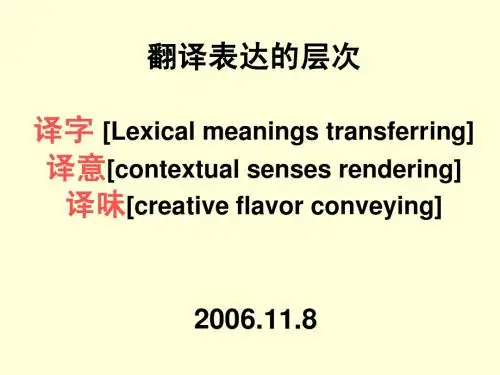
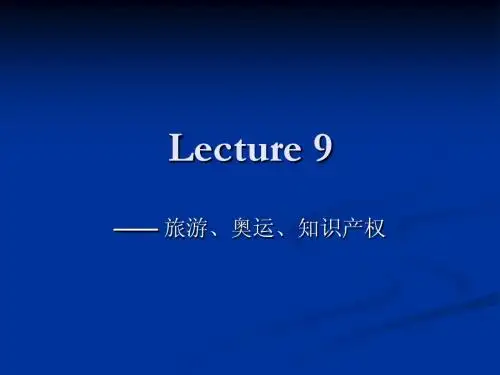
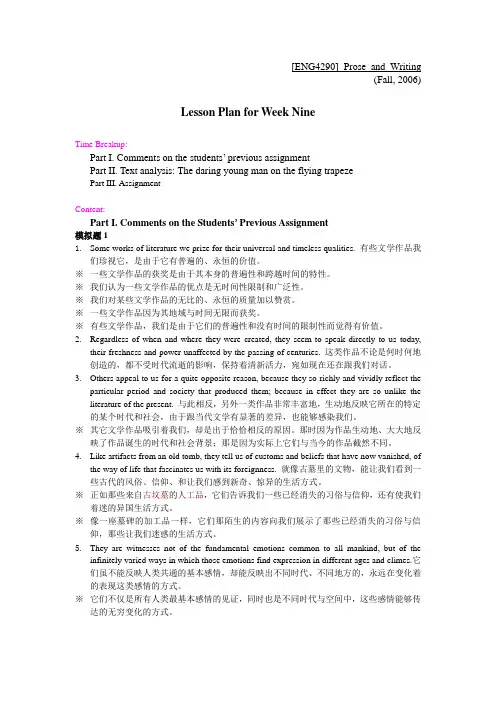
[ENG4290] Prose and Writing(Fall, 2006)Lesson Plan for Week NineTime Breakup:Part I. Comments on the students’ previous assignmentPart II. Text analysis: The daring young man on the flying trapezePart III. AssignmentContent:Part I. Comments on the Students’ Previous Assignment模拟题11.Some works of literature we prize for their universal and timeless qualities. 有些文学作品我们珍视它,是由于它有普遍的、永恒的价值。
※一些文学作品的获奖是由于其本身的普遍性和跨越时间的特性。
※我们认为一些文学作品的优点是无时间性限制和广泛性。
※我们对某些文学作品的无比的、永恒的质量加以赞赏。
※一些文学作品因为其地域与时间无限而获奖。
※有些文学作品,我们是由于它们的普遍性和没有时间的限制性而觉得有价值。
2.Regardless of when and where they were created, they seem to speak directly to us today,their freshness and power unaffected by the passing of centuries. 这类作品不论是何时何地创造的,都不受时代流逝的影响,保持着清新活力,宛如现在还在跟我们对话。
3.Others appeal to us for a quite opposite reason, because they so richly and vividly reflect theparticular period and society that produced them; because in effect they are so unlike the literature of the present. 与此相反,另外一类作品非常丰富地,生动地反映它所在的特定的某个时代和社会,由于跟当代文学有显著的差异,也能够感染我们。
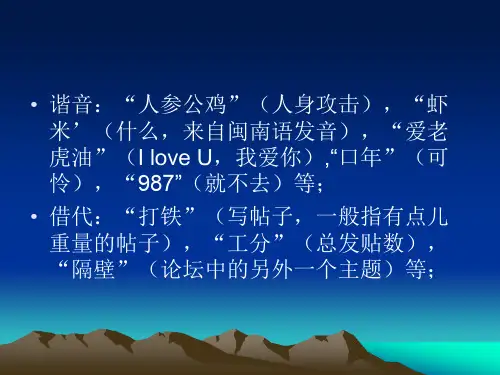
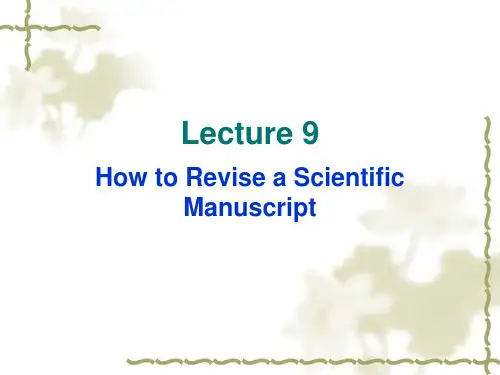
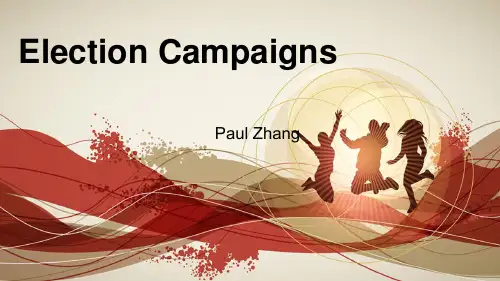
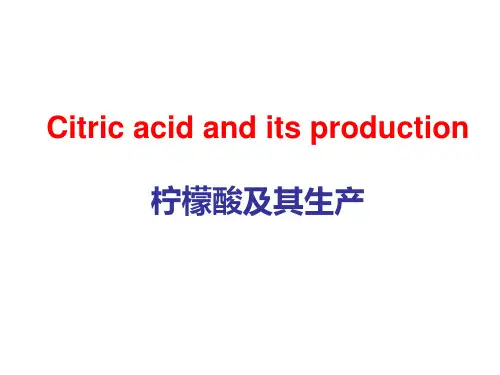
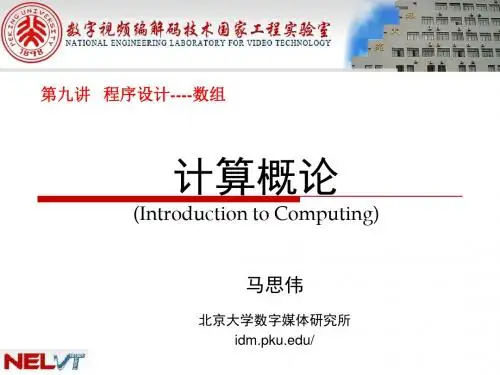
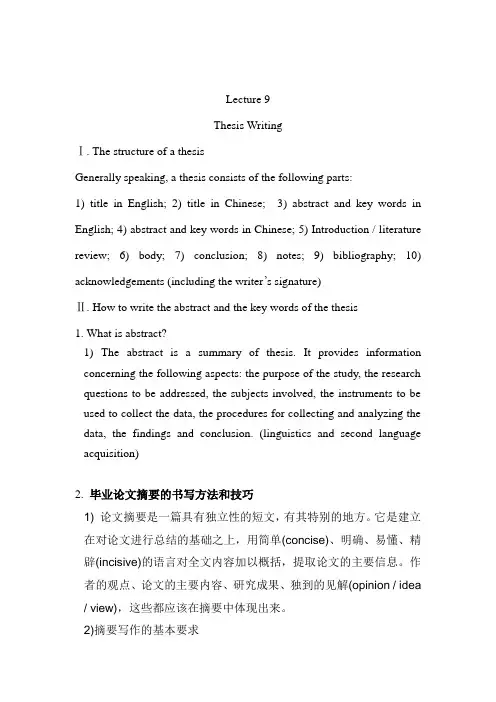
Lecture 9Thesis WritingⅠ. The structure of a thesisGenerally speaking, a thesis consists of the following parts:1) title in English; 2) title in Chinese; 3) abstract and key words in English; 4) abstract and key words in Chinese; 5) Introduction / literature review; 6) body; 7) conclusion; 8) notes; 9) bibliography; 10) acknowledgements (including the writer’s signature)Ⅱ. How to write the abstract and the key words of the thesis1. What is abstract?1) The abstract is a summary of thesis. It provides information concerning the following aspects: the purpose of the study, the research questions to be addressed, the subjects involved, the instruments to be used to collect the data, the procedures for collecting and analyzing the data, the findings and conclusion. (linguistics and second language acquisition)2. 毕业论文摘要的书写方法和技巧1) 论文摘要是一篇具有独立性的短文,有其特别的地方。

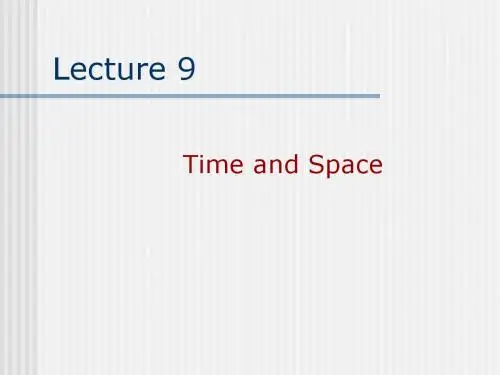
Lecture 9 Teaching Productive Skills ---speaking and writingRelated material:unit 10 Teaching Speakingunit 12 Teaching Writingspeaking writingOutline-to understand the nature of writing in reality-to learn the communicative approach to writing-to understand the process approach to writing-to evaluate writing1. The nature of writing in realityDifferences in realityWhat do we write? Why do we write? How do we write?letters, e-mails, dairies, notes, essays, poems, reports,... convey messagesplan, write, correct, rewrite2.A communicative approach to writingTo motivate students, it is necessary to engage them in some act of communication, we should advocate authentic writing.Case : compare 2 examples: e.g. 1WritingWrite about the sports which you e phrases like these:I don ’t like …I enjoy …My favourite sport is …I quite like …I prefer …to …I like …because …no sense of audience,no sense of authenticitye.g. 2A pen pal has written to you and hasdescribed the sports that he/she likes most. He/She asked your favourite sports. If you have something in common, you may want to talk about it or suggest that you play it together sometime in the future. Write back to your pen pal.Students can be motivated by authentic writing tasks that have some communicative elements.Case : compare two topics☐write on "the cars in next century"☐write on "description of a presentvehicle"Ss always like creation.Case: writing for communication?writing for language consolidation?Case: which is more communicative?Students are given ideas to expressrather than being invitedto invent their own.Summary of writing topic design☐In short students can be motivated by authentic writing tasks that have some communicative elements.☐However some writing activities can be between “writing for language practice”and “writing for communication”.2.The Models of Teaching Writing⏹Product-oriented Approach⏹结果写作法⏹Process-oriented Approach⏹过程写作法2.1 Product-oriented ApproachTeacher gives the titleStudents writeTeacher correct them2.2 Process-oriented Approach Pre-writingDraftingRevisingSecond draftTeacher’sfeedback写作主要教学活动举例写前活动写时活动写后活动•激活灵感;•激发兴趣;•明确目的和读者对象;•讨论主题;•搜集素材;•语言准备;•阅读范文;•写初稿;•规划文章结构;•填空;•看图作文;•图文转换;•仿写;•连句成文。
第九讲 载流子的漂移和扩散(续)载流子的流动9月24,2001内容:1.准费米能级2.连续性方程3.表面连续性方程阅读作业del Alamo Ch. 4,§4.6;Ch. 5,§§5.1,5.2通知:课程6.720J/3.43J期末考试定于12月17,早9点,在du Pont.主要问题●有和准费米能级等价的,能被用在热平衡区之外的能级吗?●在平衡区之外载流子能级分布是怎样的?●在一个体半导体的载流子流中,载流子如何形成分门别类的关系?●在表面如何呢?⒈ 准费米能级□ 在TE 时,费米能级说明了在能带中载流子的能级分布情况F E 使0c n N 与有关而0p N υ与有关。
在TE 之外,F E 不能被使用。
定义两个“准费米能级”如下在麦克斯韦-玻尔兹曼统计下(,c n N p N υ==)准费米能级有什么好处?□ 将()fe n f E =相对于x 进行微分:带入电流方程:得到:对空穴类似得到:准费米能级梯度:对载流子流动的统一驱动力。
□ f E的物理意义对电子,那么:fe E 与电子速度成线性的关系!对空穴类似得到:□ 准费米能级:在平衡之外在能带图中形象化载流子现象的有效方法1. 形象化电流:●00fe e E J ●00fe e E J 薰●如果n 高,fe E 小以维持一定的电流水平●如果n 低,fe E 大以维持一定的电流水平例子:2. 形象化载流子浓度●如果20fe fhi E E np n U >●如果20fe fhi E E np n U <●如果20fe fh i E E np n U =(在TE 时的载流子浓度)例子(相同的半导体):□ 准费米能级概念的其它意思:准平衡:在实际关心的时间范围载流子能量分布与TE时相差不很远。
准平衡近似如果:散射时间=主要器件的时间常数载流子经历许多次碰撞达到和晶格热平衡很快。
在关心的时间范围,载流子分布接近麦克斯韦分布(也就是说,能被费米能级很好的描述)。
讲义:纯交换经济中的一般均衡David Autor14.03 2004 秋季1动机到现在,我们一次只讨论了一种市场:劳动,食糖,食品等等。
但是这只是一种为方便起见的虚构。
虽然不致引起误导,但仍然还是一种虚构。
市场总是相互关联的:●削减食糖税 → 食糖价格下降●→ 蔗糖农场就业减少●→ 蔗糖工人寻找其他农场的工作,压低了农场工人的一般工资●→ 耕地被用于其他用途●→ 引来新品种作物的种植●→ 其他农场产品价格下跌●→ 消费者实际收入上升●→ 消费者收入的上升增加了对糖果这种奢侈品的需求●→ 甜点市场增长,小餐馆生意兴隆●……这样的连锁反应简直是无止境的。
某种程度上,单一商品的市场不存在这样的情况。
价格和数量的所有变化都对其他商品的需求和/或供给有着反作用:●收入效应●价格上升/下降的商品的替代性/互补性●其他资源的过剩/短缺的变化为了加强理解,我们需要一个能同时反映所有市场相互作用的模型,并且由此得出一个总体的均衡特征。
这就是一般均衡模型,它同我们这学期已经使用过的部分均衡模型不一样。
2埃奇渥斯盒对于“所有市场”问题,我们需要减小它的范围以使其易于处理和分析。
但是我们也要保留这个问题的本质:埃奇渥斯盒(以Jevons Edgeworth命名)使我们能做到这一点。
可以说我们只需要2个相互作用的市场就能研究整个问题:●2种商品●2个人●纯交换●(这个模型中不包括生产;这个学期我们没有时间来做这样的扩展,不过这是可以理解的。
如果你想要了解,可以找我要考虑生产的一般均衡的课堂笔记。
)●机会成本的经济学概念的完美表述和模型本身一样简单,它向我们展示了两个经济学中最基本的结果:福利经济学第一和第二定理。
2.1埃奇渥斯盒,纯交换两种商品:称之为食品F和住宅S。
两个人:称为A和B初始禀赋:他们的消费:没有交换:经过交易可能出现很多情况,但是下面是无疑的:注意这个式子的组成部分:●经济中所有的资源都被重置了。
●两边的偏好都被重置了。
Lecture 9 CalligraphyHow do you understand Chinese calligraphy?•Chinese calligraphy is also called the art of lines.•Calligraphy’s purpose is to retain the beauty of nature and illuminate man’s spiritual beauty. It stresses the overall layout and harmony between words and lines.•The Chinese saying “The handwriting reveals the person” (字如其人), is directly related to calligraphy.When did calligraphy originate?•This question probably interests everyone who wishes to study calligraphy. No precise date is given in ancient Chinese history. Legend says that during the reign of the Yellow Emperor a man named Cang Jie invented the Chinese language. Calligraphy came after invention of the language. We may attribute- the invention to 4,600 years ago, but this is only a legendary tale and may not be credible.Chinese Characters 1•Chinese characters have played a significant role in the development of the outstanding culture of the Chinese people. Chinese characters are one kind of the most ancient characters. In the world, there were originally ancient Sumerian闪族人and ancient Egyptian letters. However, the two disappeared successively and only Chinese characters remain extant.Eight Basic Strokes•dot (‵),•dash (–),•perpendicular downstroke (|), downstroke to the left, or left-falling stroke (É), •wavelike stroke, or right-falling stroke (),•hook (),•upstroke to the right (),•bend or twist (¬).“Eight Ways of Writing Chinese Characters”(永字八法)Chinese Characters 2•Chinese characters, based on pictographs and combining shape, sound and meaning, become akind of unique block-shape characters with meanings. Chinese characters originated from drawings.Chinese Radicals•Strokes form Chinese radicals (偏旁)• A radical is the prefix of the word.•Some basic character components are standalone characters (独立成字), lik e “土” and “山”, but most are just parts of them.The most complicated Chinese character ?•The number of strokes within a single Chinese character ranges from a few to more than 30 strokes.Character Formation•As is well-known, written Chinese is not an alphabetic language, but a script of ideograms.Their formation follows three principles:•Hieroglyphics Or The Drawing of Pictographs象形•Associative Compounds会意•Pictophonetics形声Four treasures of the study•Four treasures of the study : brush , ink, paper and ink stone•The best of each of these items is represented by:Hu brush (湖笔), Hui ink stick (徽墨), Xuan paper (宣纸) , Duan ink stone (端砚).•Different Chinese Calligraphy Scripts• 1.Oracle Inscriptions (Jia Gu Wen):• 2. Inscriptions on Bronze Objects金文/钟鼎文• 3. Bamboo and Wood Slips竹简与木简• 4. Inscriptions on Drum-shaped Stone Blocks石鼓文• 5. Inscriptions on Stone Tablets碑文• 6. Writings on Silk帛书Five categories of Chinese scripts•the seal form (zhuan 篆书)•the official form (li 隶书)•the cursive form (cao 草书)•the regular form (kai 楷书)•the running form (xing 行书)•唐张旭《肚痛帖》•"草书",又称破草、今草,由篆书、八分、章草,沿袭多种古文字变化而成。
草书本于章草,而章草又带有比较浓厚的隶书味道,因其多用于奏章而得名。
章草进一步发展而成为"今草",即通常人们习称的"一笔书"。
张旭\怀素是最优秀的草书家,书写速度极快,落笔龙飞凤舞,字迹难以辨认,被称为“颠张醉素”.颜真卿(709-785)---楷书唐褚遂良(596-659)《雁塔圣教序》楷书陕西西安慈恩寺大雁塔柳公权(778-865)欧阳询《九成宫醴泉铭》楷书原碑石在陕西麟游九成宫,现在保存在西安碑林The running Form (行书)•The running form is somewhere between the regular and the cursive forms allowing simpler and faster writing.•the running regular form 行楷•the running cursive form 行草天下第三行书:苏轼《黄州寒食诗帖》天下第二行书:颜真卿《祭侄文稿》“天下第一行书”王羲之《兰亭序》"行书",是介于楷书与草书之间的,运笔自由的一种书体。
行书不同于隶、楷,其流动程度可以由书写者自由运用。
行书表现出浪漫唯美的气息•How to Practice Chinese Calligraphy?•Choosing a good copybook is a good beginning.•Different strokes are the first you should pay attention to.•The regular form is usually taken as the standard form for beginners to practice because it is the basic form for other inscriptions.•Furthermore, in order to develop this skill you must practice regularly and train hard.Lecture 10 SportsSport in ancient times•As an important part of popular culture, sports in China began to take real shape during the Qin,Han and Three Kingdoms periods. Sporting images have been recorded over the Dynasties by sepulchral (坟墓的) mural paintings, stone paintings (岩画), brick paintings (画像砖), pottery figurines (人物像) and poems.equestrian polo 击鞠Cuju 蹴鞠Chuiwan 垂丸•In the Yuan Dynasty, people like playing a game called Chuiwan, which is similar to golf as shown in the mural Hitting Balls.Ethnic Sport•With around 1,000 kinds of Ethnic sports, some of the more well known ones are Mongolian wrestling, horsemanship (马术) and archery; Hui kicking the shuttlecock (毽球) and the tug-of-war (拔河); Tibetan yak (牦牛) racing; Miao swinging and dragon-boat racing; Zhuang throwing of colored silk balls (抛绣球); Korean swinging and see-sawing jumping (跳板);Manchu skating; Dong walking on stilts (踩高跷); Yao whipping tops (打陀螺).What’s WUSHU called in the West?•Wushu, Chinese martial arts, known in the West as Kungfu, is a traditional folk sportcharacterized by various bare hands and armed combat techniques.The History of Wushu•In the Han Dynasty(206B.C-220A.D), wushu became quite popular.Tang Dynasty•During the Tang Dynasty, both military men and scholars were required to practice wushu.The boxing style of Shaolin Temple became very popular.Ming and Qing Dynasties•The Ming Dynasty saw the all-round development of Chinese martial arts. Qi Jiguang wrote two better-known books: New Martial Arts and Military Training Record.•In order to keep its ruling position, the government of the Qing Dynasty once restricted wushu practice, but that could not prevent wushu from spreading among the people.Types of Wushu•Bare-handed boxing•The wielding of weapons•Combat•Collective performancesFamous Boxing Styles•Changquan, taijiquan, xingyiquan, nanquan, shaolinquan, tanglangquan, zuiquan…Weapons•Long weapons: spears, broadsword;•Short weapons: short swords, daggers, hooks•Flexible weapons: nine-section cudgels, three-section cudgelsQi Gong•Qigong is believed to have started in the 17th century BC in the age of Lao Zi, the founder of Daoism.•Hua Tuo, a famous physician, created China’s first structured self-strengthening exercise, the Five-Animal Play, incorporating movements that imitated the tiger, deer, bear, ape and bird.Qigong has come to a long way since then.Functions of Qigong• 1. Invigorate and strengthen constitution• 2. Harmonize relationship between man and his environment• 3. A way to keep fit in both mind and bodyTypes of Qigong•The quiescent qigong, by means of concentration of the mind to have the qi move along the jingluo•The dynamic qigong, by means of body movements to achieve a calmness of the mind •The dynamic-quiescent qigongSeven Emotions and Six Weather Factors•Joy, anger, grief, anxiety, sadness, fear and terror•Wind, cold, summer heat, wetness, dryness and fireMajors Schools of Taiji•Chen school, Yang school, Wu school, Wu school, Sun schoolCharacteristics of Taijiquan• A. firmness in gentleness• B. the combination of fastness and slowness• C. continuity of movementNational physical fitnessDragon boat racingDragon and lion danceKite FlyingYanggeHorse racingTug-of-War (拔河)Rope Skipping (跳绳)Radio broadcasting callisthenics (广播体操)The Olympics and China•It was not until 1932 when the 10th Olympic Games were held in Los Angeles that China was invited for the first time to send athletes to compete.•By the end of the Athens Olympics, Chinese athletes had accumulated 112 gold medals over six Summer Olympic Games.29th Olympic in Beijing•One world, one dream.•Five mascots•Extraordinary Olympic in the history.Chinese Outstanding Competitive Sports•Table TennisTable tennis is very popular throughout China and is popularly known as the “National Ball Game” of China.Chinese table tennis players have performed exceptionally well in international competitions.•BadmintonChina became a formal member of the International Badminton Federation in 1981. Since then, Chinese badminton teams have won the Thomas Cup (托马斯杯) six times, the UberCup (尤伯杯) ten times and the Sudirman Trophy (苏迪曼杯) five times.•Volleyball•China has long had one of the best women’s volleyball teams in the world. They won two world championship titles in 1982 and 1986, the Olympic gold medal in Los Angeles in 1984, and two World Cup titles in 1981 and 1985, and then again the gold medal in 2004 Athens Olympics Games.•The Chinese Women’s volleyball team and its struggle for success was an inspiration to the Chinese people during the 1980s.•Basketball•CBA,the Chinese Basketball Association, was established in June of 1956. It is a non-government organization managing basketball at the national level. The advent of the CBA league represented a giant step in the development of professional basketball in China. •Gymnastics•Gymnasts have proven themselves to be among the most reliable of the Chinese Olympic squad (组队) since China began to compete at the Games.。